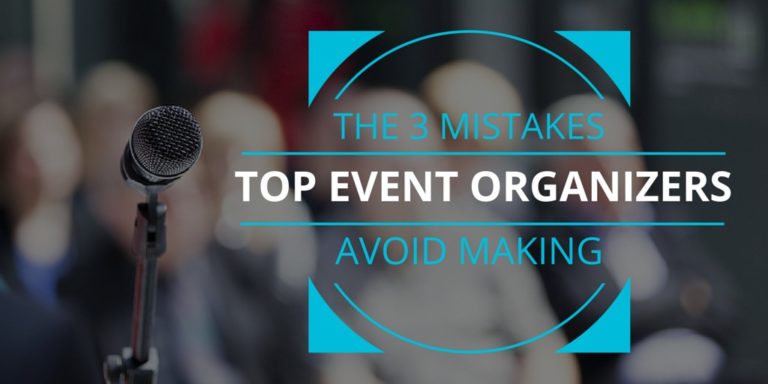Pitching to potential sponsors is a key step in providing the best event experience for your attendees. Sponsorship opportunities that fit your expectations can help to lower your costs, boost brand awareness and credibility, and get you to new target markets.
While pitching your event is an ambitious goal that comes with great rewards, it requires you to demonstrate the value your brand represents. In order to succeed, you need to know the ins and outs of how to pitch an event to sponsors.
In this article, we’ll take you through the most important phases of pitching events. Read on to learn some useful tips about finding and securing the best sponsorship opportunities.
11 Tips for Pitching Your Event To Sponsors
Turning your event idea into a fruitful collaboration requires serious work. Follow the steps outlined below to acquire some actual sponsors.
Craft Your Pitch Plan
The first step of getting a sponsorship is crafting a comprehensive pitch plan that defines the actions you plan to take, the value you offer to potential sponsors, and the goals you aim to achieve. Depending on your objectives and preferences, this can be anything from a short, single-page plan with just the main steps to an extensive slideshow detailing all the processes you use.
You can start creating your first draft from scratch, but a smarter solution is to opt for a premade template or software that guides you through all the necessary steps. This way you can make sure that you don’t miss any important elements.
Define Your Brand
Defining your brand is a key part of getting a sponsorship. As simply specifying the products and services you provide is usually not enough, you need to be able to capture the value you offer. Think of how your brand differentiates itself from competitors — or in other words, what makes you stand out on the market.
Try to analyze your competitors and how your brand performs against them. Estimate the number of clients or customers you aim to reach and your financial projections for the next years. Summarizing your purpose, culture, and values in a brief mission statement is an ideal way to show how your brand’s actions will impact clients and sponsors.
Find Your Target Audience
Whether you can identify and find your target audience for your event is critical for success. The best way to determine the characteristics and interests of your potential guests is to analyze the purpose of your event.
What age group is more likely to come to a young and cheerful pop band’s concert? Are ticket prices affordable or do you plan to organize a luxurious event for families with higher incomes? Is your event mainly for locals or do you expect to host guests from other cities or abroad? Consider the income level, age, education, interests, and location of your guests and narrow down or segment your audience into easily definable subgroups.
Create an Outline of the Basics and Your Process
Now that you’ve described your pitch plan, mission statement, and target audiences, it’s time to create an outline of the event itself. Explain the purpose and theme of your event along with the most important event metrics that will help to measure your success.
Specify your expected budget, the timeframe you’ll be working with, and whether you’ll be using automation to streamline your event. Briefly present the venue you chose and highlight the marketing strategy you’ll implement to achieve your goals. A great outline should answer all the questions potential sponsors may have in mind without going into unnecessary details.
Don’t forget to look at current event trends and predictions for the future. Define whether they will have a positive, negative, or neutral impact on your event.
Do Research To Find Suitable Sponsors
After the initial planning process, you should start searching for potential sponsors. It’s important to find the ones that align with the values and purposes your brand represents, as it increases your likelihood of getting funded.
Look for sponsors that relate to your brand or event in some way. If you’re organizing a concert, you might want to consider contacting a company that offers streaming services. If you’re holding a yoga challenge, a company that sells the best yoga mats in town is an ideal potential sponsor. Generally speaking, seeking out businesses that operate within your industry or a sector that’s in close connection can be a great starting point.
Instead of searching for sponsors on your own, you might want to consider looking for sponsor databases. These provide you with accurate records of potential sponsors you can filter according to your preferences.
Pinpoint What Your Sponsors Need
From the viewpoint of your potential sponsors, defining what they need is probably one of the most important parts of creating a pitch. After all, what they really want to see is how they benefit from collaborating with you.
New startups might want to target new audiences at an experimental music concert. Bigger companies might prefer improving brand recognition on a well-awaited, local, annual event. Your goal is to specify the exact needs of each sponsor and what you can offer in that regard.
Create a Strong Proposition and Reach Out To Sponsors
You’ve defined your brand’s value and what your potential sponsors need. To start the actual application process, you need to put these two together.
Create a strong and engaging proposition explaining all the benefits and incentives you offer. In some cases, you might want to consider setting up different sponsorship packages so that companies can choose the one that fits their preferences. If you’ve had a successful event or sponsorship collaboration before, you can include statistics that demonstrate your brand’s impact.
If you’re applying for a tender don’t forget to attach all the necessary documents and pay close attention to the application deadline. If you’re pitching to a company with which you had no prior interaction before try to find the best person to reach out to. Instead of contacting customer support, you should look out for a brand manager or marketing manager.
Don’t Make the Pitch Too Long
Making the pitch too long is a general mistake of event planners. Getting into all the specific details of how actionable care processes work while pitching about your healthcare event won’t interest your potential sponsors. In some cases, people will automatically skip your message without reading it if they find it too long at first glance.
Try to include all the necessary information about the value you offer while keeping unnecessary details and fillers to the minimum. Lowering your word count usually increases the probability of companies reading your pitches or paying attention to pitch events.
Use Visual Aids To Catch Their Attention
While a long message with dry statistics might capture every important detail you want to talk about, it’s not an ideal way to present your pitch. After all, the company you pitch to consists of actual people who want to get a sense of your brand in an entertaining way.
Instead of endless lines of text, try to make use of visual aids to spice up your presentation. Break up your message into shorter paragraphs that feel easier to read. Create colorful tables and graphs and illustrate your pitch with images and videos wherever you can.
Ensure You Can Deliver Everything You Promise
While the purpose of creating a pitch is to find the right sponsors and reach an agreement, you can’t just sit back after you’ve done so. You need to make sure that you can deliver everything you agree to.
Constantly analyze the performance of your brand and the potential outcomes of your event. Be proactive when reaching out to your sponsors and ask for feedback on a regular basis. Maintain a strong relationship with them by being transparent and accessible during every stage of the event-organizing process.
Event Proposal Pitch Examples
Here you can read a couple of event proposal pitch examples you can use as a starting point to create your own.
If you’re organizing a festival that aims to spread awareness about the importance of food assistance programs, you probably want to find sponsors that wish to create a positive public image. In this case, you should set up a pitch that specifies the expected performers of the event and the demographics of your target audience. Naming the event after your sponsor and displaying their logo near the stages is a quite reasonable offer.
If you’re hosting a yoga workout session, you might want to find young companies in the sports industry that aim to improve brand awareness. You can propose a pitch that explains how they can reach new audiences by providing branded equipment and merchandise for the event.
Find the Best Prospective Sponsors With the Right Software Solution
Finding the best prospective sponsors on your own can be a difficult, time-consuming task. However, it doesn’t have to be this way. With the help of the right software solution, you can create more sponsorship revenue in significantly less time.
Learn more about how Events.com can help you land bigger sponsors, increase your revenue, and grow your event with a comprehensive sponsorship solution.







